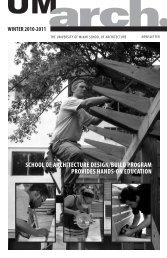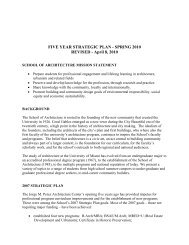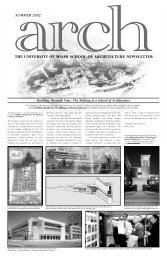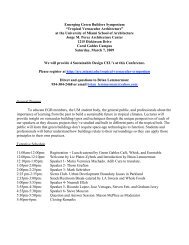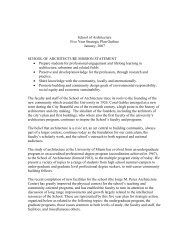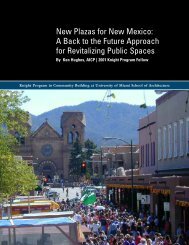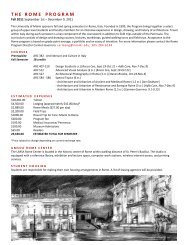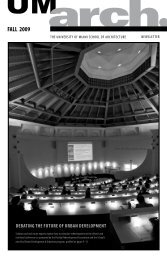Full Report - Knight Program in Community Building
Full Report - Knight Program in Community Building
Full Report - Knight Program in Community Building
Create successful ePaper yourself
Turn your PDF publications into a flip-book with our unique Google optimized e-Paper software.
HURLEY | THE PUBLIC PROCESS 8Lesson: Know the play<strong>in</strong>g field. Conduct a thorough stakeholder analysis atthe beg<strong>in</strong>n<strong>in</strong>g of a project and develop the community outreach plan based onthat analysis. Revisit the stakeholder analysis as the scope of the project changes.The last thirty years of experimentation <strong>in</strong> public policy dispute resolutionhave produced great successes, dismal failures, and everyth<strong>in</strong>g <strong>in</strong> between. Inreflect<strong>in</strong>g on the differences between success and failure, mediators have developedguidel<strong>in</strong>es for determ<strong>in</strong><strong>in</strong>g whether or not a collaborative process is appropriate.Guidel<strong>in</strong>es <strong>in</strong>clude consideration of many factors, <strong>in</strong>clud<strong>in</strong>g suitability of the issuesfor negotiation, ripeness for decision, time and resources available, political climate,agency will<strong>in</strong>gness, and underly<strong>in</strong>g <strong>in</strong>terests. This task is similar to ask<strong>in</strong>g if a communityis “charrette-ready.” Where the charrette-ready concept focuses on projectdef<strong>in</strong>ition and data support, the guidel<strong>in</strong>es developed by mediators focus more onprocess and power dynamics.Lesson: Make sure a community is ready for a collaborative process such as acharrette. Include considerations of politics and community organiz<strong>in</strong>g <strong>in</strong> the def<strong>in</strong>itionof “ready.” Make sure key stakeholders will participate and decision-makers will listento their <strong>in</strong>put.One of the first tasks of a collaborative group is to discuss and agree on“ground rules.” Mediators and facilitators use ground rules as a tool to help groupsof people work together productively. Ground rules are especially important <strong>in</strong> situationswith high levels of distrust, strong emotions, and conflict<strong>in</strong>g views. By discuss<strong>in</strong>gthe ground rules openly with participants and ask<strong>in</strong>g for agreement to workunder these rules, the facilitator makes the group members responsible for theirbehavior. At the same time, this agreement empowers the facilitator, because thefacilitator only enforces rules that the group has decided it wants. Typical groundrules <strong>in</strong>clude:• Start and end on time• Listen…Don’t <strong>in</strong>terrupt• Speak up…Everyone is important• Focus on issues, not people• Respect confidentiality• Decide by consensus





